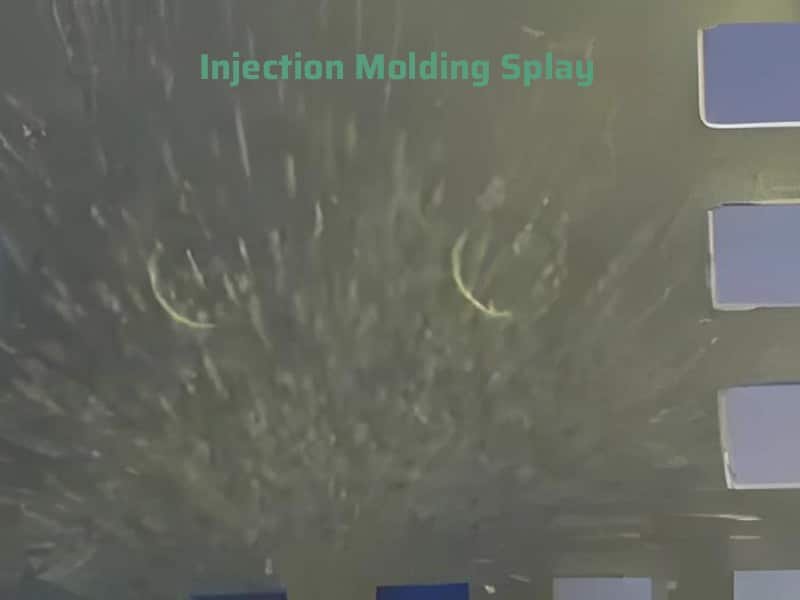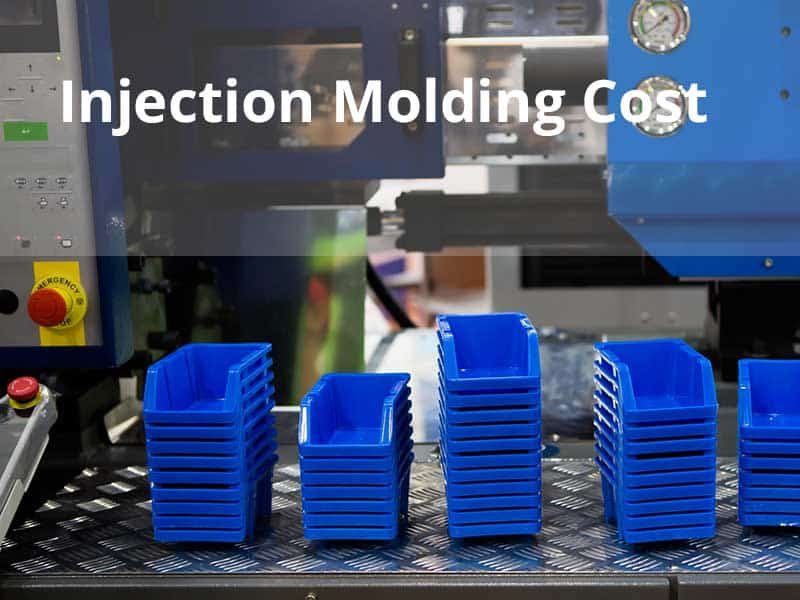Air bubbles in injection molding are defects that can occur during the manufacturing of products, particularly in plastics. They form when the center of the product’s wall thickness cools more slowly than the surface, leading to uneven contraction and cavities. Additionally, when raw materials decompose under heat, the water and air produced can create more air bubbles inside the product.
These air bubbles typically appear as numerous small voids within the finished product and may be accompanied by silver streaks on the surface. For products requiring water-proof performance, even a tiny air bubble can render the entire product defective, especially in severe cases. This is critical for precision and high-quality parts, which must be free from such defects to meet industry standards.
To fix air bubble in injection molding, start by observing the product, issues related to product design, the type of plastic materials used, and the mold can typically be spotted. This initial inspection helps in making a preliminary assessment, which is usually straightforward. After forming an initial evaluation, the next step involves adjusting the parameters of the injection molding process. This adjustment helps in gaining a clearer insight into the problem, allowing for the identification of the exact cause behind the air bubble defect.
Erye as a China injection molding factory, based on our experience, the following are common causes of and solution for air bubble in injection molding.
Uneven Wall Thickness
When the product has uneven thickness with locally thick areas, this can trap air leading to air bubble in injection. During the injection molding process, thick sections may freeze quickly, preventing proper filling and causing bubbles.
Design products with uniform wall thickness can ensure even mateiral flow and reduce the risk of air beng trapped.
Improper Material Selection or Handling
Unsuitable materials can trap air and leading to bubbles. Common issues include:
- Mixing other plastics into raw materials or adding too much powder to pellets, which traps air during melting. This is often due to improper material handling or contamination, leading to air entrapment in the melt stream.
- Recycled plastics often have loose pellet structures with micropores that retain significant amounts of air. Using recycled resin can lead to gas release during processing, forming air bubbles.
- Raw materials containing volatile solvents or liquid additives, such as white oil (a lubricant for dyeing), silicone oil (a lubricant), dibutyl phthalate (a plasticizer), stabilizers, and antistatic agents, can cause issues. If these additives are used excessively or mixed unevenly, they can enter the mold cavity in aggregates, trapping air and forming bubbles.
- Plastics not subjected to drying treatment or absorbing moisture from the atmosphere can lead to bubble formation. Moisture vaporizes during processing, creating air bubbles.
- Certain grades of plastics cannot handle high temperatures or long heating times,, leading to degradation and bubble formation.
How to Fix the Problem
To reduce air bubbles, consider these solutions:
- Using uncontaminated, pure raw materials reduces the risk of air-trapping issues caused by mixing with other plastics or powders.
- Limit or avoid using recycled materials to minimize air retention.
- Reduce using additives, especially volatile ones like white oil, silicone oil, and dibutyl phthalate.
- Dry the plastic for the recommended time according to material standards to remove moisture.
- Change material grade with better heat resistance or add additives to improve performance under high temperatures.
Inadequate Mold Design
Mold design problems can trap air or create conditions that lead to bubbles during manufacturing. Here are the main causes:
- Mold Design Flaws: Such as poor gate location, small gates,narrow runners, and unreasonable cooling systems causing excessive mold temperature differences, leading to discontinuous melt flow, blocking air channels
- Venting Problems: If the mold doesn’t have enough vents or they get blocked, especially at the parting line where the mold halves meet, air can get trapped, causing bubbles.
- Surface Roughness: A rough mold surface increases friction, leading to local overheating, which can decompose the plastic and release gases, forming bubbles.
How to Elminate Air Bubbles
To fix the air bubbles caused by mold design, folllowing steps can be taken:
- Adjusting the gate location and runner size ensures better material flow and reduces temperature differences, ensure gates are ≥50% of wall depth
- Add or enlarge venting slots, especially at the parting line, to let air escape during the process,
- Reduce surface roughness of the mold to reduce friction and overheating, based on application needs and product appearance requirements.
Injection Molding Process Problem
Improper settings or operations during the injection molding process can lead to air bubbles, with common causes including:
- Material temperature too high, causing the plastic to decompose and release gases.
- Low injection pressure and short holding time, preventing the melt from fully adhering to the mold cavity surface, trapping air.
- Fast injection speed can cause shear heating, decomposing the plastic and generating gases, while slow speed fails to fill the cavity in time, leaving low-density areas where air gets trapped, forming bubbles.
- Insufficient material quantity, to much material cushion, material temperature too Low, or mold temperature too low can all affect the flow of the melt and molding pressure, causing air bubbles
- Multi-stage injection involves varying speeds and pressures (medium for runners, slow for gates, fast then low-pressure slow) to control flow and expel gases, but improper staging can trap air, causing bubbles.
- Low back pressure and high screw speed during pre-plasticizing can trap air between plastic granules, pushing it forward and forming bubbles in the mold.
How to Get Rid of Air Bubbles
Adjusting the following parameters can effectively solve these issues:
- Reducing material temperature prevents thermal decomposition, reducing gas generation and bubble formation.
- Higher pressure and longer hold time ensure better packing, forcing out trapped air and reducing bubbles.
- Adjust injection speed based on product structure, balancing fast and slow stages to avoid shear or incomplete filling.
- Increase material quantity to ensure enough melt for filling.
- Use multi-stage injection with controlled speeds (medium for runners, slow for gates, fast then low-pressure slow) to expel gases.
- Higher back pressure and slower screw speed during pre-plasticizing reduce air entrapment, preventing bubbles.
Conclusion
By implementing the solutions discussed above, you can effectively address air bubble defects in injection molding. If you encounter further challenges or require assistance with other injection molding troubleshooting issues, please feel free to contact us. As a professional manufacturer, Erye molding are committed to providing expert support and solutions tailored to your needs.






